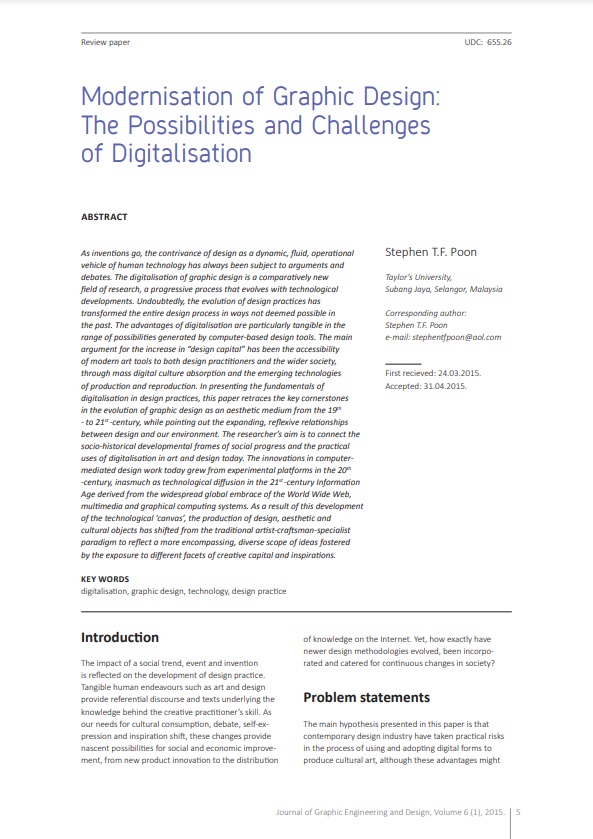Modernisation of Graphic Design: The Possibilities and Challenges of Digitalisation

Published 2023-09-30
abstract views: 519 // Full text article (PDF): 382
Keywords
- digitalisation,
- graphic design,
- technology,
- design practice
How to Cite
Copyright (c) 2015 © 2015 Authors. Published by the University of Novi Sad, Faculty of Technical Sciences, Department of Graphic Engineering and Design. This article is an open access article distributed under the terms and conditions of the Creative Commons Attribution license 3.0 Serbia.

This work is licensed under a Creative Commons Attribution 3.0 Unported License.
Abstract
-
As inventions go, the contrivance of design as a dynamic, fluid, operational vehicle of human technology has always been subject to arguments and debates. The digitalisation of graphic design is a comparatively new field of research, a progressive process that evolves with technological developments. Undoubtedly, the evolution of design practices has transformed the entire design process in ways not deemed possible in the past. The advantages of digitalisation are particularly tangible in the range of possibilities generated by computer-based design tools. The main argument for the increase in “design capital” has been the accessibility of modern art tools to both design practitioners and the wider society, through mass digital culture absorption and the emerging technologies of production and reproduction. In presenting the fundamentals of digitalisation in design practices, this paper retraces the key cornerstones in the evolution of graphic design as an aesthetic medium from the 19th - to 21st -century, while pointing out the expanding, reflexive relationships between design and our environment. The researcher’s aim is to connect the socio-historical developmental frames of social progress and the practical uses of digitalisation in art and design today. The innovations in computermediated design work today grew from experimental platforms in the 20th -century, inasmuch as technological diffusion in the 21st -century Information Age derived from the widespread global embrace of the World Wide Web, multimedia and graphical computing systems. As a result of this development of the technological ‘canvas’, the production of design, aesthetic and cultural objects has shifted from the traditional artist-craftsman-specialist paradigm to reflect a more encompassing, diverse scope of ideas fostered by the exposure to different facets of creative capital and inspirations.

